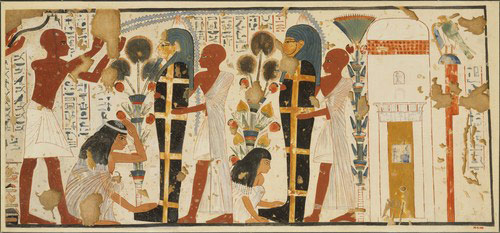Coffins in Ancient Egypt
This artifact is a wooden anthropoid coffin of Bakenmut. In ancient Egypt, tombs acted as an eternal place for the Afterlife, and the coffins were the mini houses within it. In early times, the coffins were used to contain and protect the mummies. Ancient Egyptian coffins evolved, but they maintained two necessary forms: rectangular and anthropoid. Coffin designs and decorations only changed to accommodate changing ideas of the Afterlife.
One of the most basic funeral objects purchased, whether for royalty or other elites, for a tomb was the coffin. The earliest coffins were made of wood and were shaped in rectangular boxes. It was until the Middle Kingdom, anthropoid-shaped coffins first appeared. According to, Burial Customs in Ancient Egypt, usually the wealthy would request multiple coffins for their burials and sarcophagi to hold them. A sarcophagus is typically a stone coffin to carry the actual coffin in the tomb. As for the people with lower status, they were usually buried in single coffins, traditionally made of pottery or small shafts, and painted in yellow. Though, some mummies are buried in single wooden coffins. There were instances where middle and upper-class burials would bury the mummies in multiple coffins. Nested coffins usually consist up to four coffins. The designs and styles of the coffins differed each period. In the 21st dynasty, tomb building almost came to an end in Thebes and the Valley of the Kings. During this period, mostly in Thebes, anthropomorphic coffins mainly existed. Anthropomorphic coffins were coffins that shaped like humans.
Citations: Grajetzki, W. (2003). Burial Customs in Ancient Egypt: Life in Death for Rich and Poor (Duckworth Egyptology).

